

Published in Spring 2024
The demand for learning and development (L&D) professionals is on the rise. Many factors have led to this increased need for L&D expertise, including advancements in technology and a shifting perspective on the strategic role of L&D in addressing business challenges. However, navigating your career as a learning professional is challenging. The pathway to landing a job in L&D is not linear — and the skills, knowledge and experience that L&D professionals need to grow in their careers are evolving.
Training Industry, Inc. is dedicated to supporting the career advancement of L&D professionals, which is the inspiration behind our L&D Careers and Salary Survey. This research effort investigates the career needs and salary benchmarks of training professionals across organizations and industries. This report will share the survey results from more than 370 learning professionals to help you understand the factors you should consider as you navigate your career and compensation as a training professional.
What Are L&D Professionals Currently Doing?
Our survey asked L&D professionals a variety of questions to better understand how L&D is structured within their organizations, including job titles, size of the training team and where the responsibilities for training reside within the business. The results revealed the following:
-
- Job Titles: The most common job titles represented in the sample were training managers, directors of training, content developers and instructional designers.
- Training Structure: The majority of the sample was housed either in their organization’s HR department or within a centralized L&D department.
- Work Arrangements: L&D professionals were more likely to work in person in 2023; 14% more L&D professionals reported a fully in-person work arrangement than in 2022. The level of hybrid work remained relatively stable between 2022 and 2023, while the level of remote-only professionals declined in pace with the increase in in-person-only professionals. (See Figure 1.)
- Work Hours: The learning professionals surveyed tended to work between 40 and 50 hours a week and were slightly more likely to work greater than 40 hours than they were to work 40 hours or less. (See Figure 2.)
- Size of Training Team: The size of a learning professional’s team depended on the size of their organization. Nearly 1 in 3 small organizations (less than 100 employees) employed just one training professional, whereas 1 in 5 moderately sized organizations (between 100 and 1,000 employees) employed only one training professional. Once organizations reach 10,000 employees or more, their training teams tend to grow, often exceeding 20+ training professionals. (See Figure 3.)
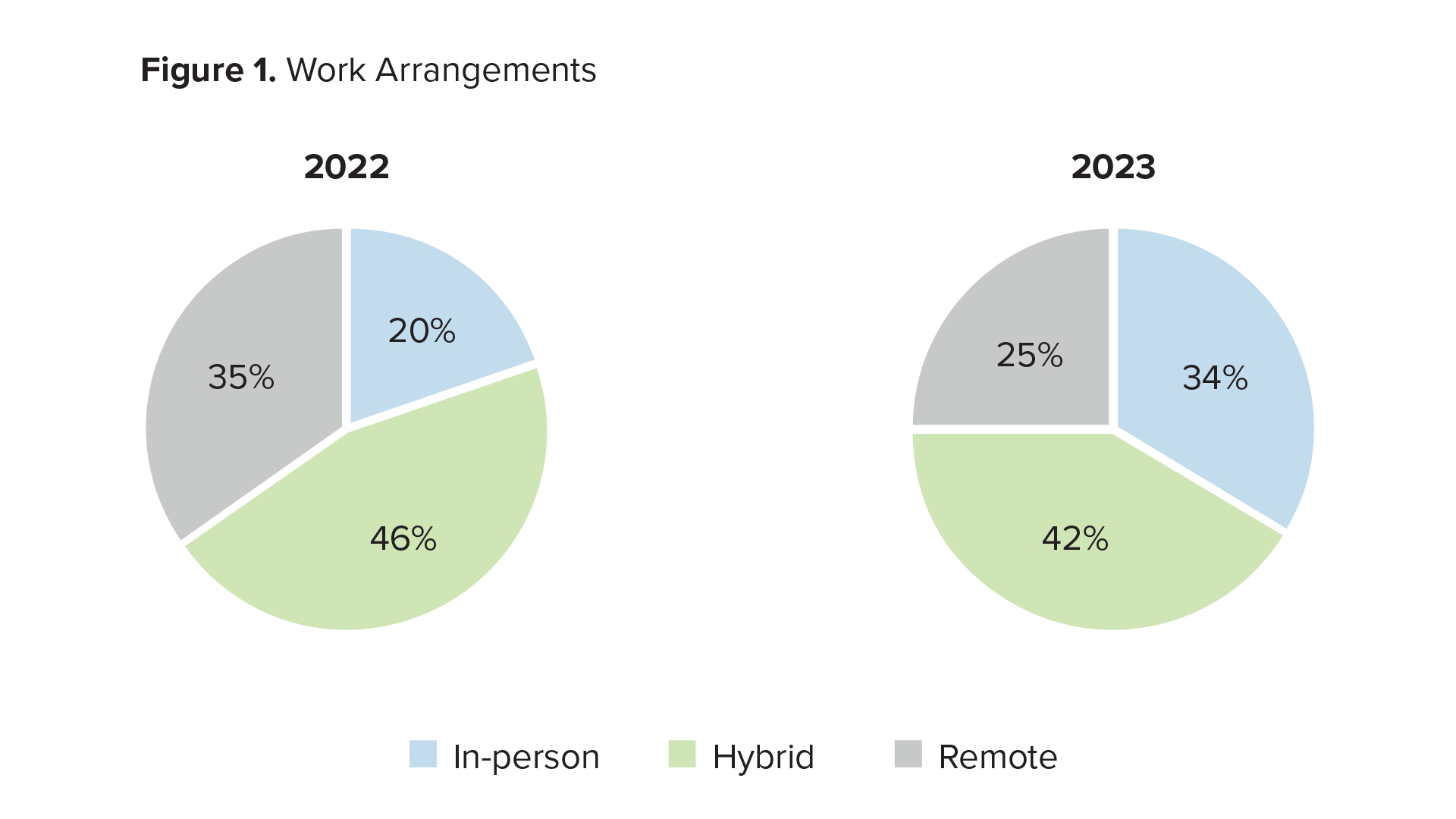
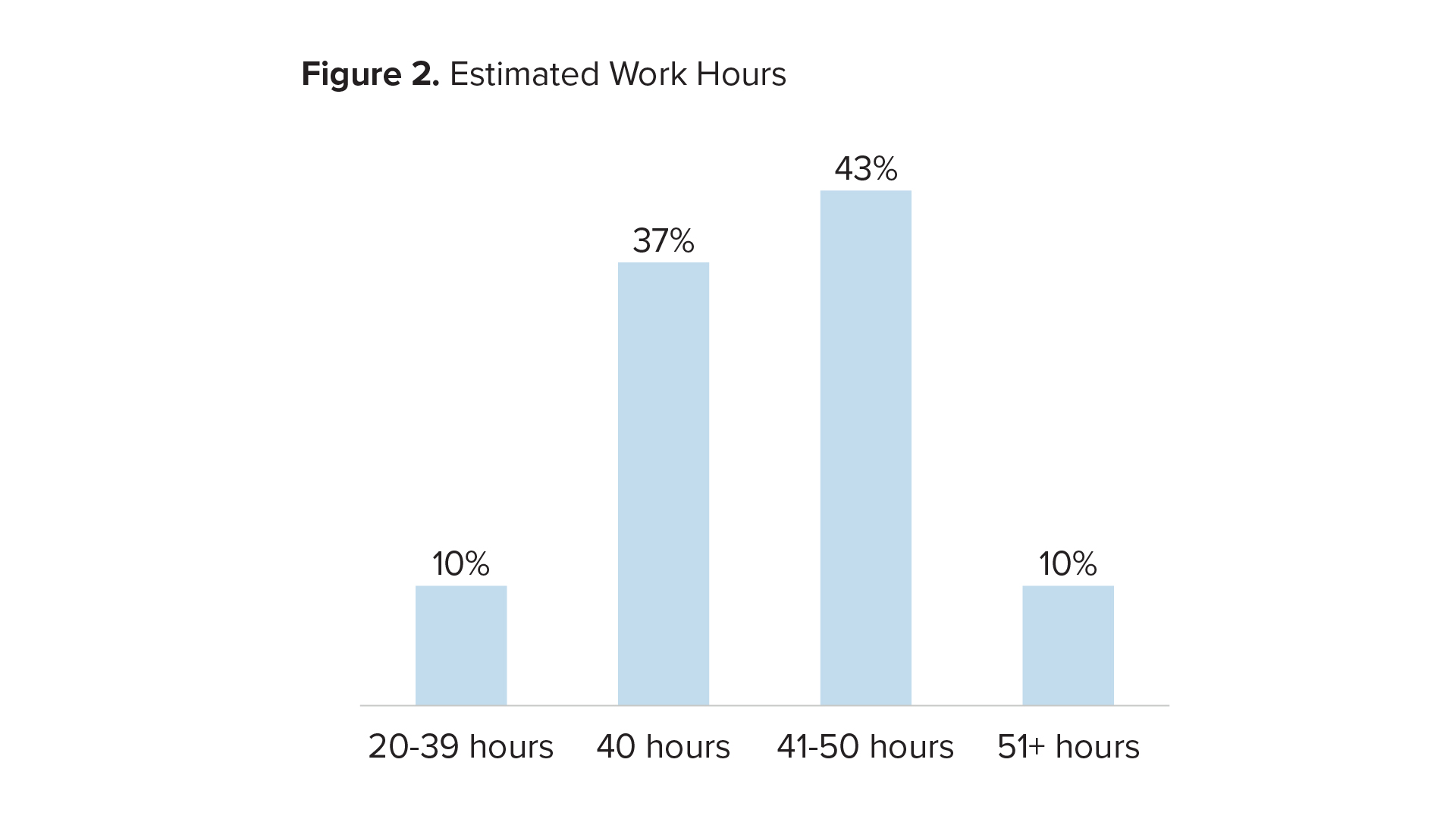
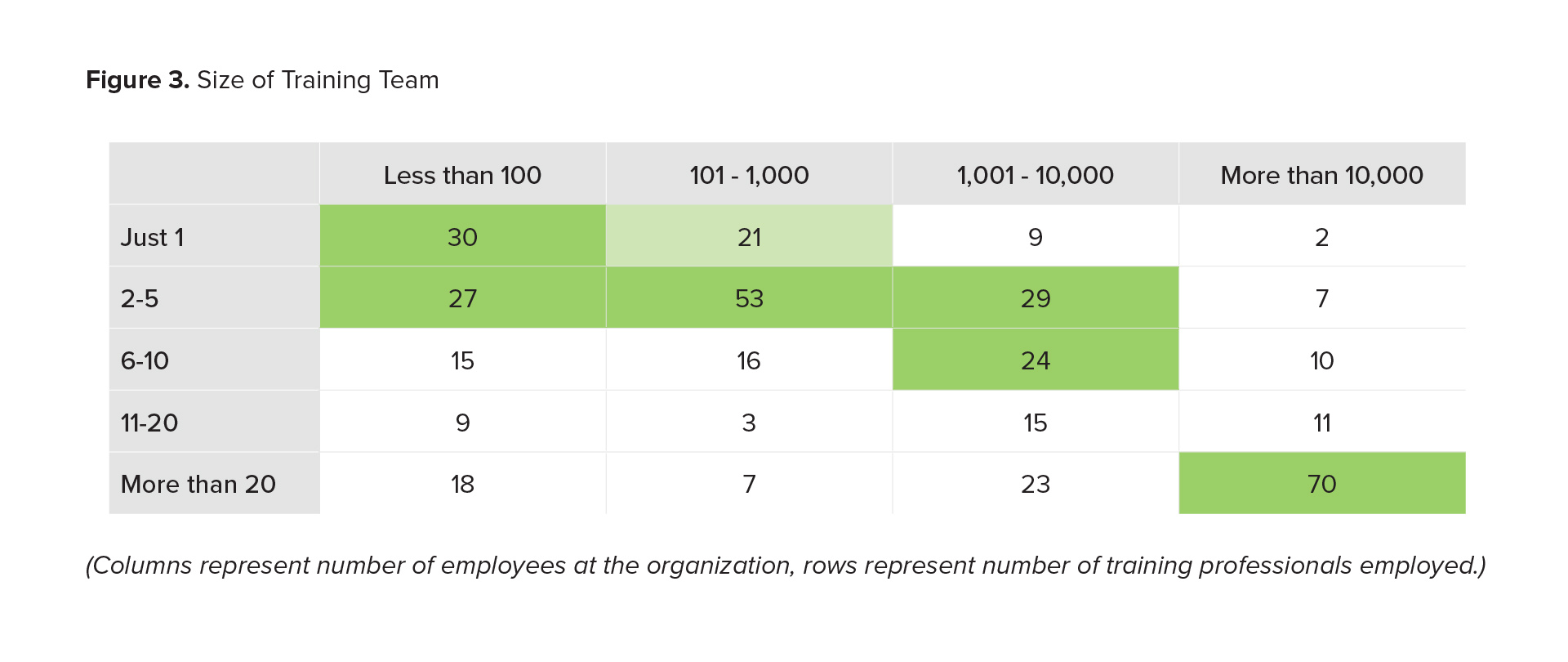
How Do Learning Professionals Feel About Their Work?
The learning professionals felt a sense of identity and satisfaction with their work, agreeing that their job was a big part of who they are and disagreeing that they are planning to leave their company or look for new jobs. (See Figure 4.)
Interestingly, among each of the questions related to their feelings toward work, only “I can never seem to catch up at work” showed any relation to salary; professionals who struggled to keep up with their workload also earned the highest salaries. Unsurprisingly (and perhaps unfortunately), those with higher salaries generally tend to feel more overwhelmed with their work. Similarly, higher-salaried L&D professionals also tended to work longer hours per week.
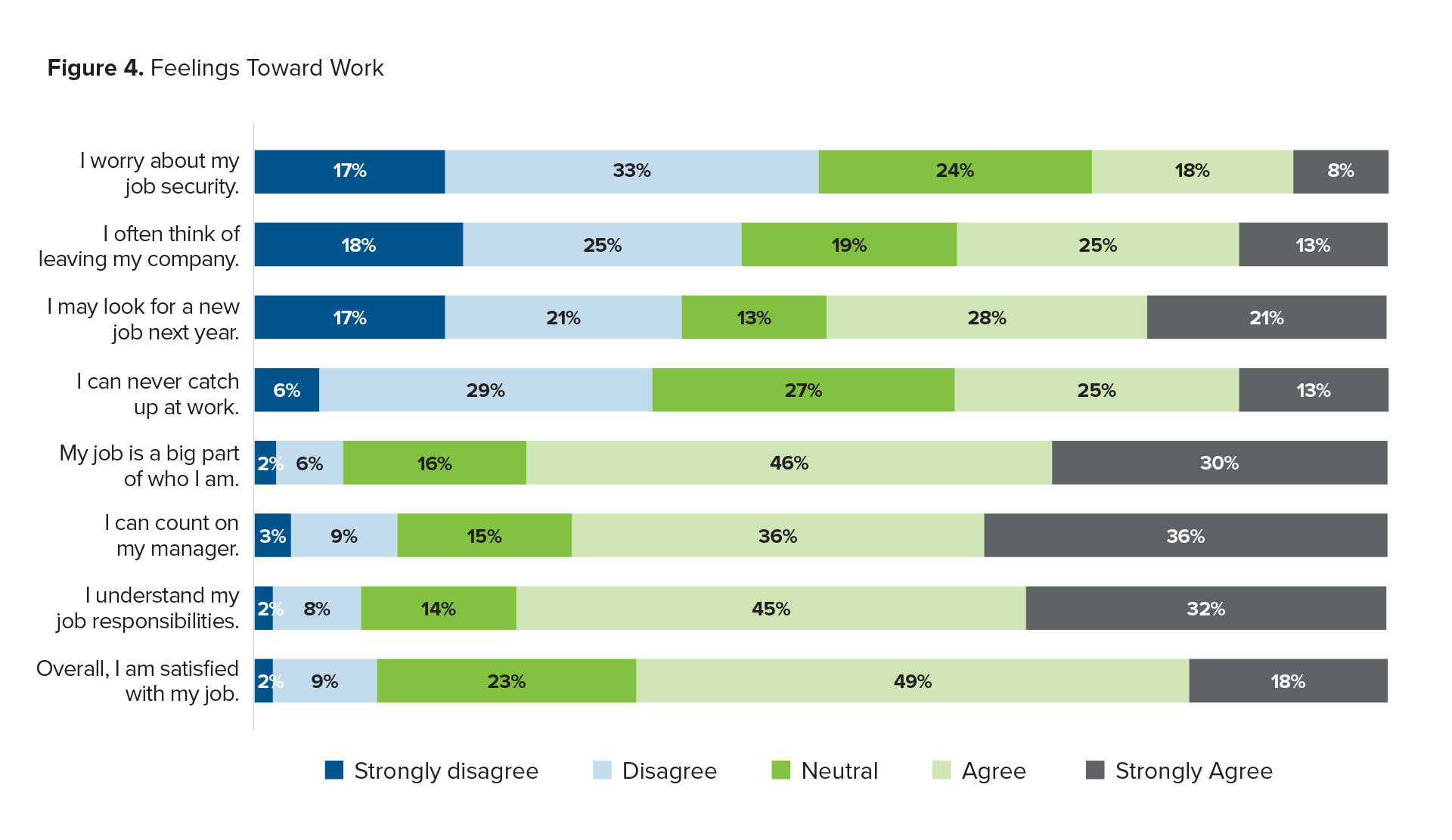
Categorizing Factors that Impact L&D Salaries
Our study strived to better understand compensation for L&D professionals. The results revealed that the overall median salary for a training professional is $100K. Figure 5 details the breakdown of salaries across a variety of factors, including job title, industry and size of company. While we found that salary did not impact job satisfaction — L&D professionals tended to demonstrate high levels of job satisfaction regardless of salary — we noted that personal professional development budget was related to satisfaction, with those working for companies that invest in their professional development reporting higher satisfaction. This suggests that learning professionals want to develop themselves, and they prefer organizations that will support their growth.
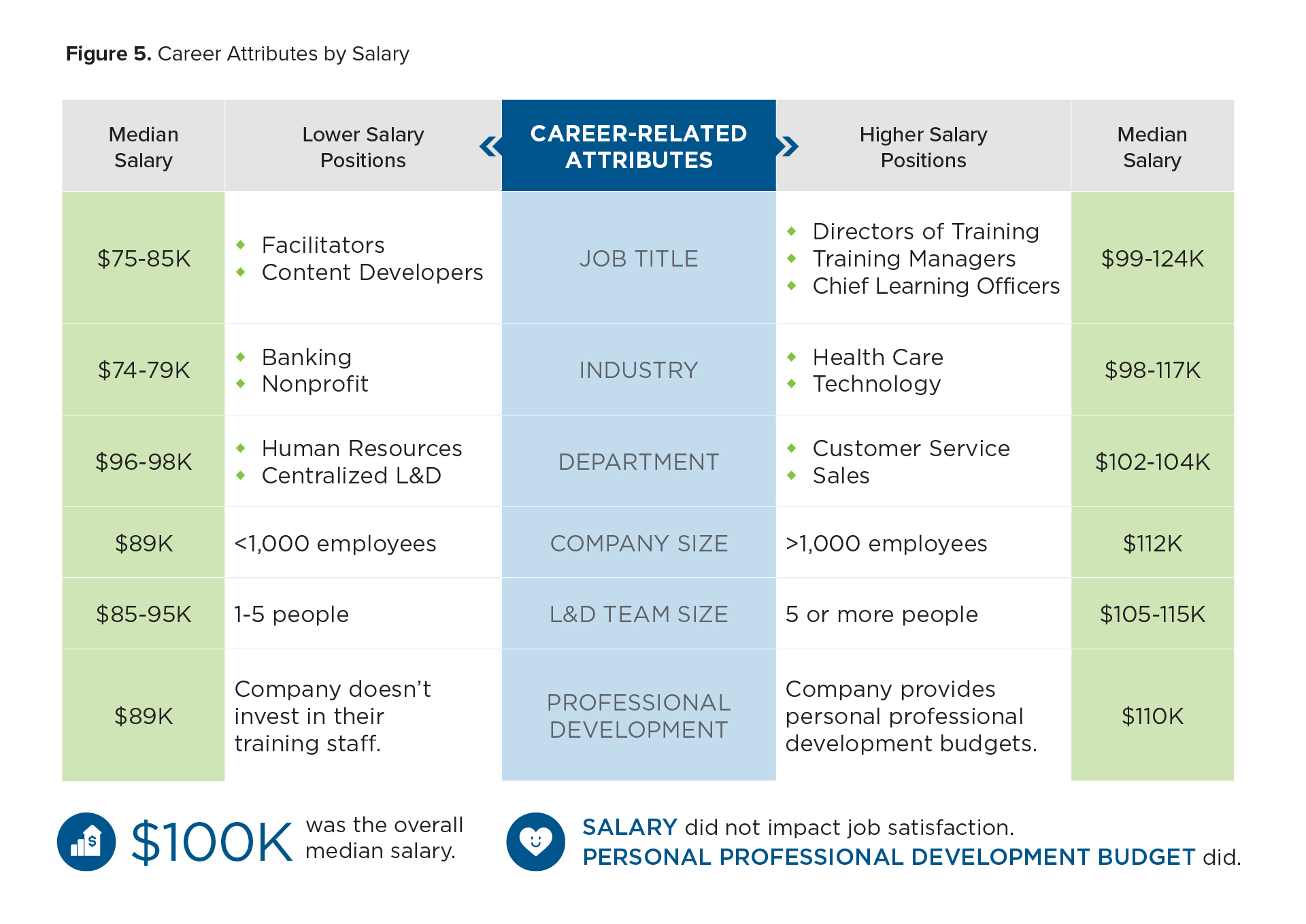
The Skills, Attributes and Characteristics of High-Salary Learning Professionals
The highest-salaried learning professionals had a few key aspects in common:
-
- Mastery of the Training Manager Competency Model™, particularly strategic alignment, needs assessment and selecting and managing resources.
- Participating in professional development, including internal training programs as well as external training programs and conferences (both virtual and in-person).
- Completing a professional certification program.
- Holding a master’s or doctoral degree.
- Maintaining a leadership position with direct reports.
- Experience — years in the workforce was positively related to salary.
- Working more than 40 hours per week.
Career Goals and Development: Path to the C-Suite
Our survey also considered the career aspirations of L&D professionals, as well as the skills and development that they believe they need to grow in their careers. Becoming a director of training or chief learning officer (CLO) was the most common career goal for training professionals. However, nearly 20% of the sample indicated that they do not feel like they have the skills necessary to reach their professional development goals.
Given these career goals, L&D professionals seemed to have a realistic picture of the types of skills that would best prepare them to achieve those goals, focusing on development needs in areas like business acumen and strategic alignment. The topics that were most commonly called out as professional development needs were:
-
- Strategic alignment.
- Change management.
- Process optimization.
- Stakeholder communication.
- Competency model development.
- Business acumen.
When it comes to dedicating time to professional development, our survey respondents are prioritizing their learning. Over 90% of learning professionals indicated that they engaged in some form of professional development over the past year but found professional certifications to be the most beneficial form of development.
We hope you can use these insights to better benchmark and navigate your career and salary as an L&D professional.